What is a half overlay hinge and how to install it?
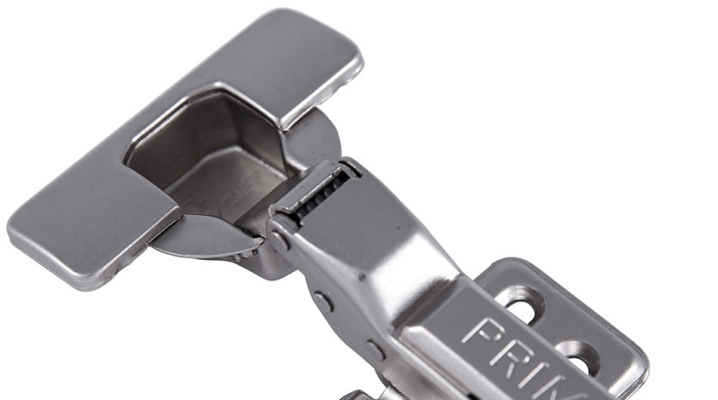
Furniture hinges are an important element of almost all furniture and door designs. The convenience of their use and the level of functionality will depend on these details. Today we will look at what a half overlay hinge is and how to install it.
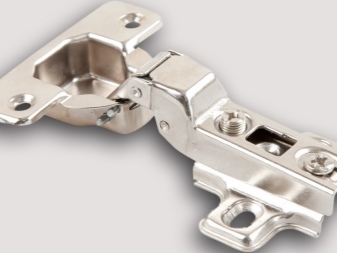

Features and purpose
Construction hinges are special mechanisms that, as a rule, are fixed to the front part. They allow you to smoothly open and close various designs. Currently, there are a large number of varieties of such elements, but overhead and semi-overhead types are considered the most popular options.
Semi-overlay hinge models have the appearance of a four-hinge structure. They are most often used in the manufacture of wardrobes with hinged doors. These samples are distinguished by a special level of strength and reliability.
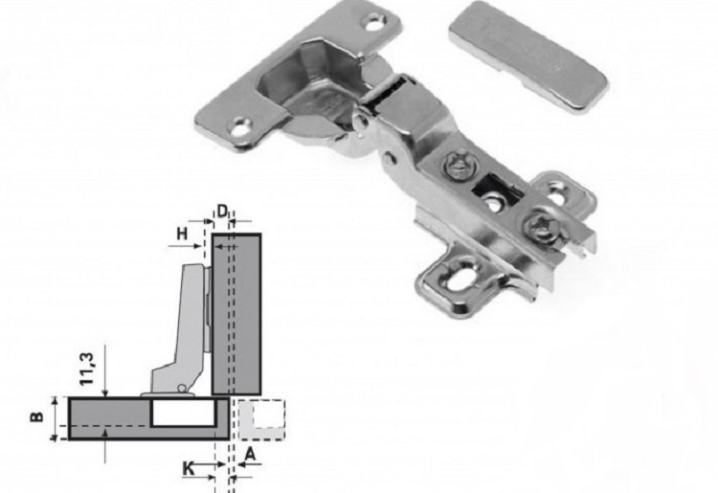
The models can be easily installed on both large and small structures.
The semi-applied hinge is equipped with a special shoulder levers with a significant bend. Due to this structure, the doors in the open state will obscure only half of the end of the wall, therefore it is recommended to use them mainly for floors. Their angle is the same as that of standard surface-mounted models, 110 degrees. Semi-overhead varieties will be the best option for assembling and installing structures equipped with adjacent doors (kitchen sets consisting of several sections, three-door cabinets).
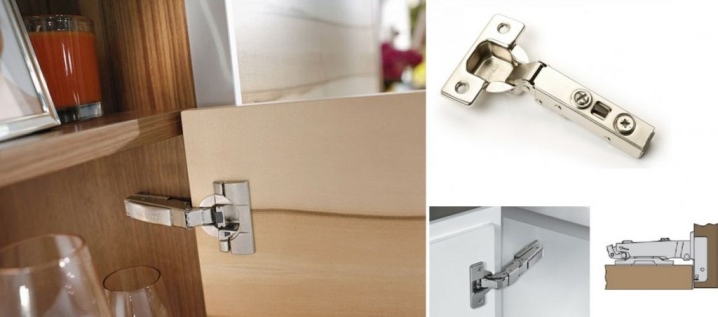
Comparison with overhead models
Overhead models differ from semi-overlay samples primarily in that, after installation, they completely cover the end face (the second option will cover only half of the end face of the wall). The difference between these hinges lies in the fact that semi-applied models are produced with a shoulder lever that has a large bend. It is these design features that allow them to cover only part of the end.
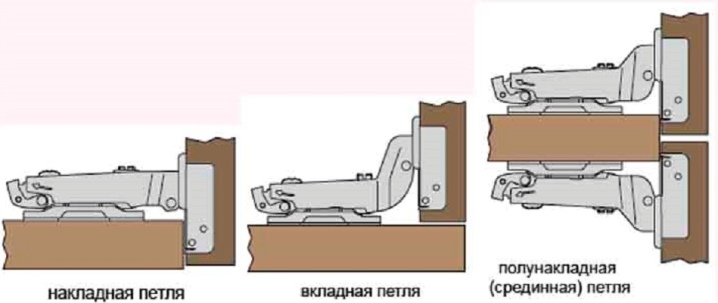
Varieties
Today, in specialized stores, customers will be able to see a wide variety of half overlay hinges. Depending on the method of fastening the individual elements of the part, they are divided into several types.
- Key-hole. These fittings are often called "keyhole". Such hinges consist of two main components: a cup with a knee and a mounting striker. When making such samples, both parts are simply passed through each other and connected through a loop.
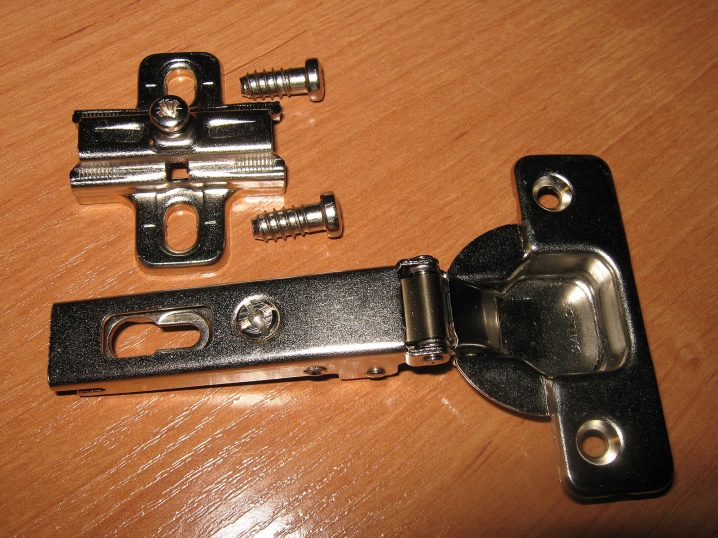
- Slide-on. This hardware is considered a traditional option. Both parts slide into each other. They are fixed with a reliable screw, due to which they also carry out the adjustment.
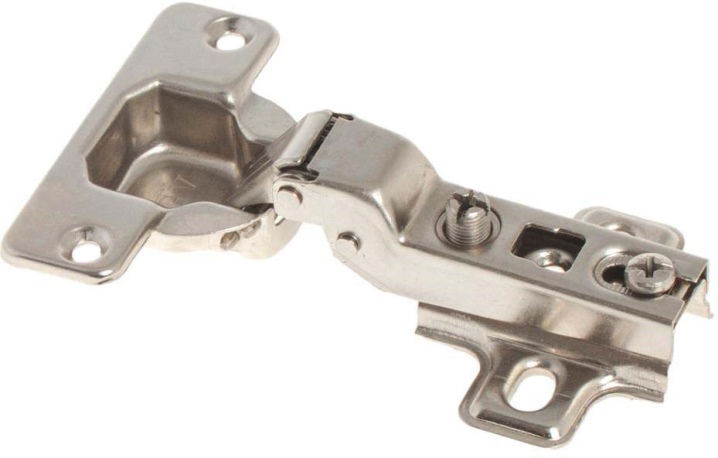
- Clip-on. Parts of the part snap together. Thus, the fastening screw is not used in their manufacture.

In stores you can find special models with a door closer. Such an additional mechanism can be installed directly in the hinge itself or mounted separately. These varieties perform an amortization function.
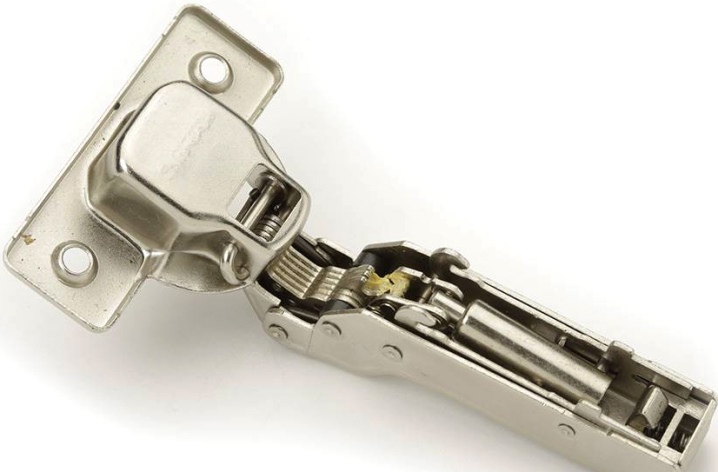
They provide maximum smooth opening and closing of doors.
And also the semi-applied hinges may differ from each other depending on the size of the bowl. The most common options are samples with dimensions of 26 and 35 millimeters. But today, many manufacturers produce products with other values.

Installation
To make furniture structures as reliable and durable as possible, special attention should be paid to their assembly.
- First you need to make the markup. The necessary marks are applied to the furniture door, where the recess for the hinge bowl will be drilled. Separately mark the place that will be the center of the hole.
- Decide in advance on the number of loops. It will directly depend on the dimensions of the facade itself, as well as on the total weight of the product. In this case, in any case, it is necessary to retreat a small place from the edge of the valves (about 7-10 centimeters). It is necessary to step back a little from the side of the surface by 2-3 cm. If you install several loops at once on a product with a height of more than 100 cm, then remember that the distance between them should be about 45-50 centimeters.
- Then, according to the markings made, holes are drilled for the hinge bowl. It is better to form grooves with a special Forstner drill. The use of a well-sharpened cutter will avoid the formation of a large number of chips and minor damage. It is better to pre-lay the sash on a flat, smooth surface.
- The approximate depth of the excavation should be about 1.2-1.3 centimeters. If you make the hole deeper, then there is a risk of damage and deformation of the outer facade of the furniture. Drilling is recommended strictly vertically. Otherwise, during operation, the tool can severely damage the surface of the furniture product.
- After drilling the holes, you can start installing the hinges themselves. And also they will need to be well adjusted so that the doors hang evenly in the future. It is better to fix their position with a level or a special ruler. Remember that each element should be pressed as tightly as possible to the surface of the facade. When the loop is evenly fixed on the structure, you will need to make marks for the screws with a simple pencil. At the end, they are fixed with a screwdriver, while controlling the position of the hinges.

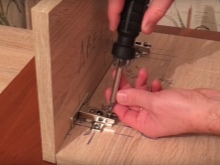

See below for what a semi-applied buttonhole looks like.













The comment was sent successfully.